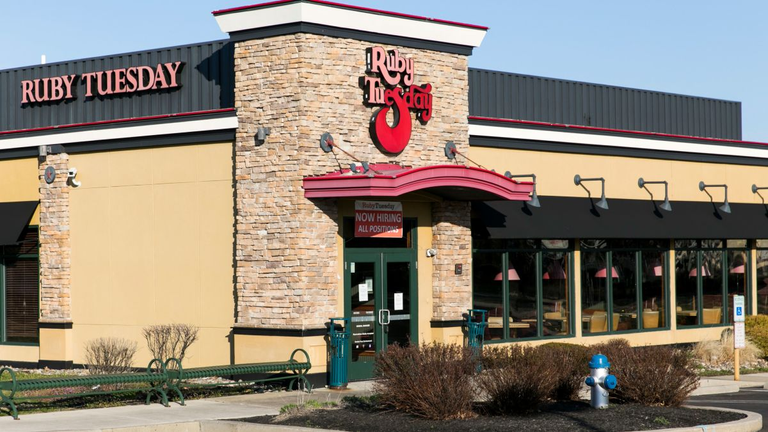
Ruby Tuesday’s had 945 locations in 2007.
Today, the chain is down to 209 stores.
The chain launched in 1972, where it grew every year until 2007 and had reported revenues of 1.4 billion dollars at peak.
Today, the company has lost nearly 80% of all locations, went from being publicly traded to going private and was one of the worst hit chains with COVID, where it closed over 150 locations during the pandemic.
Big question, what happened?
Looking at this, the first thing many people cite is the decline of malls in the United States.
Ruby Tuesday’s built itself for decades getting deals in malls as they became more popular in the 1980s.
For the last 20 years, malls have been in a decline, where it’s projected 25% of malls will close by the year 2027.
This was also predicted before COVID, where Credit Suisse said they projected 25% of malls to close by 2022 in the year 2017.
Credit Suisse was wrong, but many malls are still seeing reduced foot traffic and closing for many is likely.
The mall issue is an obvious problem, but I don’t actually think it’s the big one.
AMC pre COVID was growing, where it doubled from 2014 to 2019, going from 2.7 billion in revenue to 5.4 billion.
AMC is a business heavily dependent on malls and they succeeded, as well as gyms and some other businesses.
The issue for Ruby Tuesday’s seems to be the style of restaurant in itself.
Apple Bee’s has 1,572 locations currently.
They’ve had a smaller decline in the last decade, going from around 2,000 stores almost a 25% decline.
1,289 Chili’s locations are in the US.
They haven’t seen as huge of a store decline, but the parent company, Brinker International, has seen a 30% drop in stock value the last five years and revenue was stagnant with inflation from 2014 to 2019.
All of these chain sit down restaurants have had heavy declines, where they don’t seem to appeal to people anymore.
Two thoughts on why this is the case.
First, the change in restaurant culture with menu’s.
Chain restaurants like Cheesecake Factory and many others market large menu’s often.
Large menu’s at early restaurants a hundred years ago were the norm, where today smaller menu’s are seen as fine dining.
A hundred years ago, the idea of a restaurant was new, so it’d be seen as classy to be able to go into a place and get an option of 100 different things.
Today, specialty is key and people like eating at places which perfect a set menu.
This makes the chain restaurants a little obsolete and why Chili’s in 2017 cut the menu size by 40%, saying it was difficult for the kitchen and wasn’t liked by customers.
Issue two, general branding in public perception.
I remember about 15 years ago watching an episode of Two & a Half Men, where Charlie & Alan were on a double date.
Alan’s date was Charlie’s dates friend and supposed to be from the south. She mentioned they didn’t have many nice restaurants where she’s from. Charlie goes “really” and she responds “Well, we have a Friday’s and a Ruby Tuesday’s”.
This is one example of a common trend, where shows such as Family Guy, the Ranch and dozens more have made jokes about these places, to the point it’s made people look down on eating there.
McDonald’s, Chipotle, Taco Bell and fast/quick service chains continue to grow, but that’s due to them focusing on being more of a utility, offering fast and cheap food.
Ruby Tuesday’s and others focus on offering an experience, by people sitting down and eating.
That experience is something which seems to have lost cultural appeal, where if people are going to get an average cost lunch, they prefer going to small businesses over chain locations.
That’s why these places likely will keep declining over the next decade, unless a serious change is made in branding.